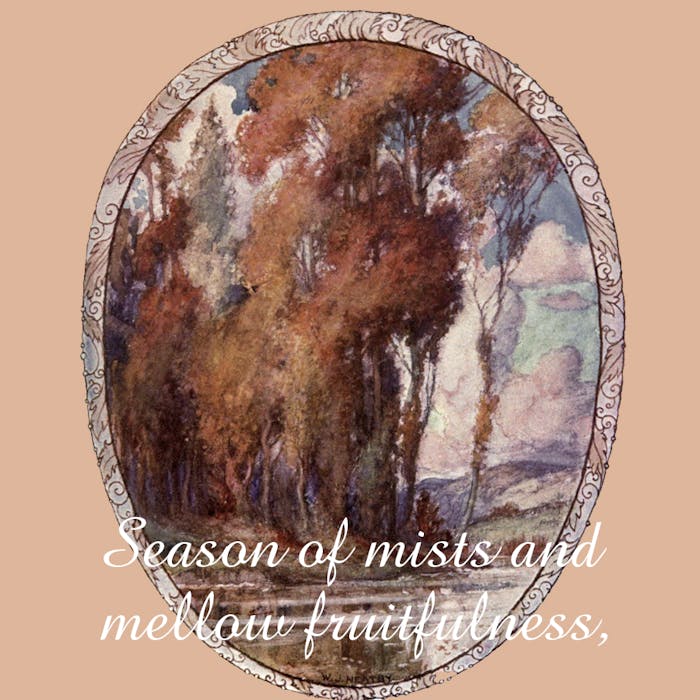
To Autumn - John Keats' final poem inspired by a Winchester walk
Capturing the special seasonal atmosphere "To Autumn" is a famous poem by English Romantic poet John Keats, written in 1819 as one of his final works - 18 months before his death in 1821.
The work was composed on 19th September 1819 and published in 1820 in a volume of Keats's poetry that included Lamia and The Eve of St. Agnes and is known as the final work in a group of poems known as Keats's "1819 odes". He composed "To Autumn" after a walk near Winchester one autumnal evening. The work marks the end of his poetic career, as he needed to earn money and could no longer devote himself to the lifestyle of a poet. A little over a year after the publication of "To Autumn", Keats died in Rome.
The poem has three eleven-line stanzas which describe a progression through the season, from the late maturation of the crops to the harvest and to the last days of autumn when winter is nearing. The imagery is richly achieved through the personification of Autumn, and the description of its bounty, its sights and sounds, as in the lines "While barred clouds bloom the soft-dying day, And touch the stubble-plains with rosy hue". It has parallels in the work of English landscape artists, with Keats himself describing the fields of stubble that he saw on his walk as conveying the warmth of "some pictures". Artists to be inspired by the poem include William James Neatby whose illustration for "To Autumn" rom A Day with Keats, in 1899, appears above.
On 19th September 1819, Keats walked near Winchester along the River Itchen. In a letter to a friend, Keats described the impression the scene had made upon him and its influence on the composition. "How beautiful the season is now – How fine the air. A temperate sharpness about it. I never lik'd stubble fields so much as now. Somehow a stubble plain looks warm – in the same way that some pictures look warm."
The work has been interpreted as a meditation on death; as an allegory of artistic creation; as Keats's response to the Peterloo Massacre, which took place in the same year; and as an expression of nationalist sentiment. One of the most anthologised English lyric poems, "To Autumn" has been regarded by critics as one of the most perfect short poems in the English language.
Although Keats managed to write many poems in 1819, he was suffering from a multitude of financial troubles throughout the year, including concerns over his brother, George, who, after emigrating to America, was badly in need of money. Despite these distractions, on 19th September 1819 he found time to write "To Autumn". The poem marks the final moment of his career as a poet. No longer able to afford to devote his time to the composition of poems, he began working on more lucrative projects. Keats's declining health and personal responsibilities also raised obstacles to his continuing poetic efforts.
Further reading
Links to external websites are not maintained by Bite Sized Britain. They are provided to give users access to additional information. Bite Sized Britain is not responsible for the content of these external websites.
